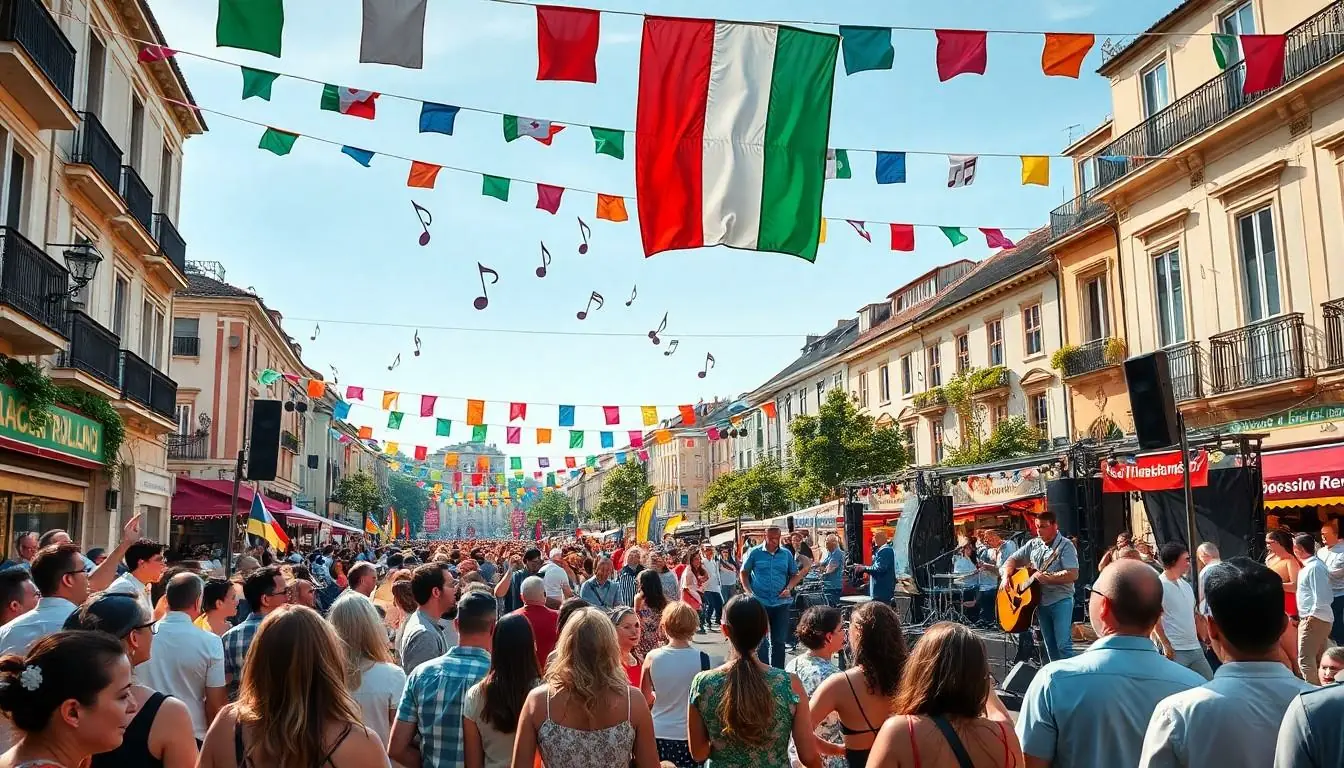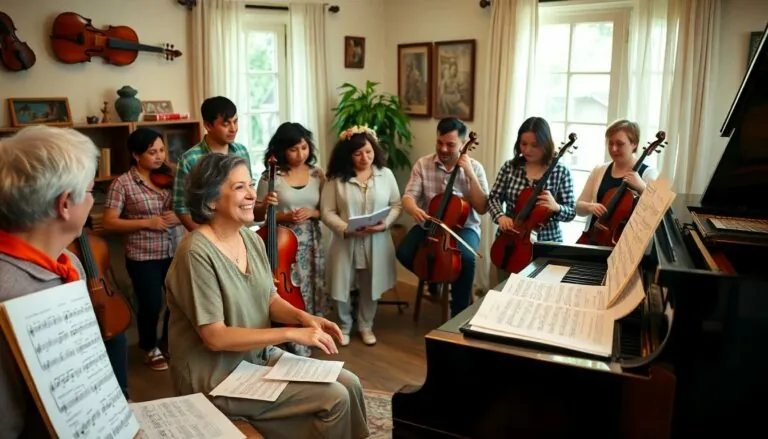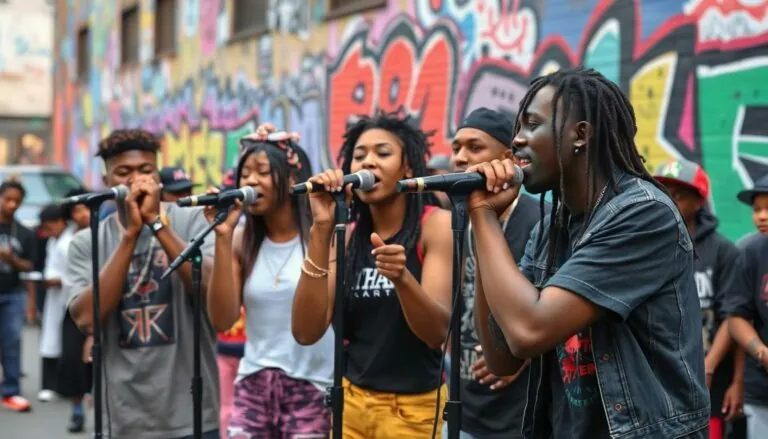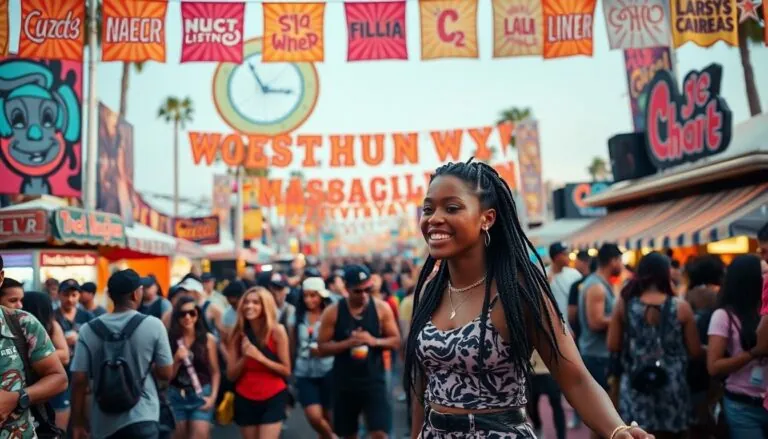Table of Contents
ToggleItalian pop music isn’t just a genre; it’s a vibrant celebration of life, love, and a dash of drama. From the catchy melodies that get stuck in your head to the lyrics that tug at your heartstrings, this music has a way of making even the most mundane moments feel like a scene from a romantic movie. If you’ve ever found yourself swaying to the beat of an infectious chorus, you know exactly what we mean.
But it’s not all about the ballads and the romance. Italian pop is a delightful mix of styles and influences, blending traditional sounds with modern flair. It’s like pasta—there are countless variations, but each one has its own unique charm. So grab a glass of Chianti and let’s dive into the world of Italian pop music, where every note tells a story and every artist brings their own flavor to the table.
Overview of Italian Pop Music
Italian pop music features a rich blend of styles, showcasing its cultural diversity. Lyrical themes often revolve around love, life, and personal struggles, touching listeners on an emotional level. Artists like Laura Pausini, Tiziano Ferro, and Eros Ramazzotti represent the genre’s global appeal. These musicians not only capture the essence of Italian culture but also resonate with audiences worldwide.
Musical influences include traditional folk sounds, contemporary rock, and dance music. Such variety mirrors the culinary richness of Italy, where each region offers something distinct. Various artists incorporate elements from different musical traditions, enriching their sound and expanding the genre’s reach.
The genre’s evolution showcases its adaptability, evolving with changing musical trends. In the 1960s, artists like Adriano Celentano and Mina infused rock and roll influences, while the 1980s saw the rise of electronic pop sounds. Modern pop music continues this trend, embracing genres like rap and trap.
Appearances in international music festivals, such as Sanremo, highlight the competitive landscape of Italian pop. This festival serves as a launchpad for many successful careers and offers a glimpse into future musical directions. Additionally, streaming platforms have transformed how artists reach their audiences, allowing for a global exchange of ideas and sounds.
Through catchy melodies and relatable lyrics, Italian pop music remains vibrant and influential. Each song contributes a unique perspective, inviting listeners to experience the beauty of Italian artistry. Engaging with this genre uncovers a diverse tapestry of musical expression.
History of Italian Pop Music
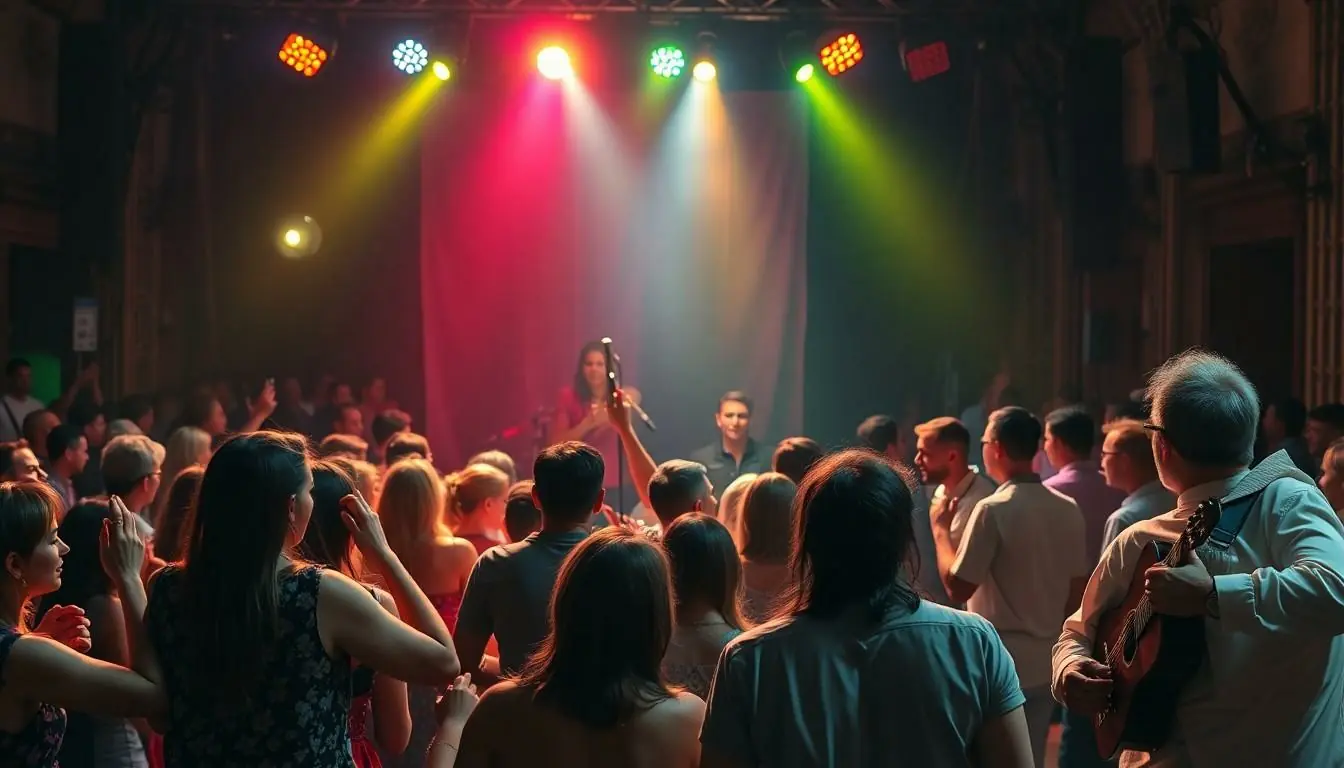
Italian pop music showcases a rich history, blending diverse influences and genres. Its evolution reflects Italy’s cultural shifts and the changing tides of popular music.
The Roots of Italian Pop
Italian pop music traces its roots to traditional folk melodies and the canzone d’autore movement of the early 20th century. Artists like Fred Buscaglione and Trio Lescano introduced playful and heartfelt lyrics, creating an inviting atmosphere. Additionally, the emergence of rock and roll in the 1950s sparked a transformation, encouraging musicians to fuse American styles with local sounds. This blend laid the foundation for the vibrant pop scene that followed.
Evolution Through the Decades
The 1960s marked a significant turning point, with Adriano Celentano and Mina leading the charge into rock and roll. As artists experimented, the 1970s brought disco and singer-songwriter influences, further diversifying the genre. The 1980s introduced electronic music, with notable acts like Raf and Taffy taking center stage. Fast-forward to the 2000s, where the genre embraced rap and trap influences, showcasing its adaptability. Trends in streaming services during the 2010s and beyond facilitated connectivity between artists and audiences, propelling new sounds into the mainstream.
Key Artists and Influencers
Italian pop music thrives on the contributions of both iconic figures and emerging talents. Each artist shapes the genre, bringing unique sounds and perspectives.
Iconic Figures in Italian Pop
Laura Pausini stands out as a leading figure in the industry, known for her powerful voice and emotional ballads. Tiziano Ferro, with his pop anthems and poignant lyrics, captivates audiences. Eros Ramazzotti combines romantic themes with a distinct melodic flair. Adriano Celentano’s influence spans decades, blending various genres and redefining Italian music. Additionally, Mina’s timeless hits showcase her incredible range and versatility. Each iconic artist enriches the genre, enhancing its cultural depth and appeal.
Emerging Talents in the Scene
New artists are reshaping the Italian pop landscape. Many emerging musicians blend traditional elements with contemporary influences. Artists like Sangiovanni attract attention with their catchy hooks and youthful energy. Madame’s fusion of rap and pop reflects current musical trends, resonating with younger audiences. Gazzelle captivates listeners with introspective lyrics and unique soundscapes. Moreover, Rocco Hunt combines rap with traditional melodies, showcasing versatility and freshness. The landscape continues to evolve as these talents bring innovation and diversify Italian pop music.
Popular Subgenres of Italian Pop
Italian pop music features a variety of subgenres that reflect its rich cultural tapestry. Many contemporary artists embrace fusion styles, merging traditional sounds with modern influences.
Contemporary Trends
Contemporary trends in Italian pop highlight the genre’s evolution. Artists frequently incorporate electronic and hip-hop elements, attracting younger audiences. Collaborations between established musicians and new talents often generate fresh sounds. It’s common to find pop tracks infused with rap verses, enhancing the rhythmic appeal. Genres like reggaeton and trap also influence the current music scene, showcasing adaptability. Streaming platforms have accelerated these trends, allowing artists to reach broader audiences.
Regional Variations
Regional variations significantly enhance the diversity of Italian pop music. Different areas contribute unique styles, influenced by local cultures and dialects. For instance, Neapolitan pop emphasizes heartfelt melodies, drawing from the city’s rich musical heritage. Likewise, Northern regions often blend pop with folk elements, creating distinct sounds. Artists from various regions often express local stories through their lyrics, fostering cultural pride. Festivals celebrate these vibrant variations, promoting regional artists to national platforms.
The Impact of Italian Pop Music
Italian pop music shapes cultural identity both locally and globally. The genre resonates deeply, with its themes of love, personal struggles, and celebration, appealing to a wide array of listeners. Artists like Laura Pausini and Tiziano Ferro exemplify this connection, drawing fans from diverse backgrounds. Through their powerful lyrics and catchy melodies, they create meaningful experiences.
Influential festivals such as Sanremo play a crucial role in promoting new talent and established artists alike. These events showcase the richness of Italian music, providing a platform for emerging stars. Consequently, artists gain visibility and connect with audiences on a larger scale.
Streaming services revolutionize how listeners access Italian pop music. With a few clicks, fans discover artists who blend traditional and contemporary styles. Innovative collaborations emerge as musicians fuse genres, expanding their reach and enhancing their sound.
Cultural exchange contributes significantly to the evolution of Italian pop music. Musicians often draw from global influences, infusing their work with fresh elements. This interplay enriches the genre, enabling it to stay relevant and diverse.
Regional differences also impact the landscape of Italian pop. Various areas, such as Naples and Lombardy, contribute distinct sounds that showcase Italy’s cultural tapestry. Celebrating these regional variations, artists often integrate local dialects and traditions into their music.
Through these multifaceted influences, Italian pop music remains a dynamic and essential part of Italy’s artistic expression, fostering connections and cultural pride. The genre invites everyone to immerse themselves in its vibrant sounds and heartfelt stories.
Italian pop music stands as a testament to the country’s rich cultural heritage and artistic innovation. Its ability to blend traditional sounds with contemporary influences ensures that it remains fresh and relevant. As artists continue to explore new themes and styles, the genre evolves while staying true to its emotional core.
The global reach of Italian pop highlights its universal appeal, drawing in listeners from diverse backgrounds. Festivals and streaming platforms play pivotal roles in promoting talent and fostering connections. This vibrant music scene not only celebrates life and love but also invites audiences to engage deeply with Italy’s dynamic cultural identity.


